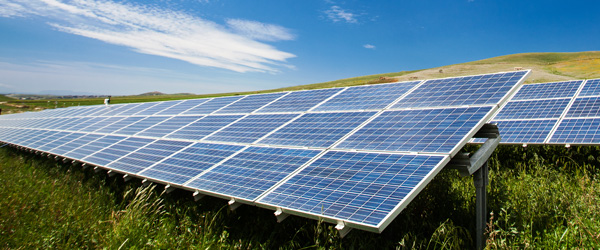[ad_1]
It has become a truism that data is the driver for businesses. We have all heard the clichés about data becoming the new oil and how companies should be making the most of all the available data they have as it will lead to untold riches, and so on.
But there has been one big problem with this vision: organisations have been struggling to keep up with the storage required to keep pace with demands on data. And it’s a problem that’s not going away any time soon.
However, to compound the difficulties that businesses are facing, there is another issue to consider: the environmental impact of this process of transformation. Datacentres already contribute greatly to carbon dioxide emissions – about 2%, the same as the airline industry – and any further increase could lead to more CO2 at a time when organisations are trying to reduce their carbon footprints.
IT and networking technology giant Huawei is looking at a new way of exploring these issues and trying to fathom how to do more to meet these new demands. At its recent Innovative Data Infrastructure forum, the company set out its plans to both cope with the new strains put on organisations, while mitigating the environmental impact.
Decoupled systems
Huawei laid out some of the ways that it was looking towards the future. The company has announced a different approach to storage by prioritising “the development of decoupled storage-compute architectures and diverse data application acceleration engines”, said Peter Zhou, president of Huawei’s IT product line.
Zhou believes that although Huawei has already offered a range of storage options, there is a need to keep up with this tidal wave of data, and existing products cannot handle these demands efficiently. “We are ushering in the yottabyte era,” he said. “Data applications are growing faster than ever.”
Zhou spoke of the inexorable rise of cloud computing and how it is leading to a slowdown in the take-up of hard disk drives (HDDs) and a rise in flash memory. There has clearly been a rise in data demand: talk of a yottabyte era is no exaggeration. According to Huawei’s own Global industry vision report, by 2030, 1 yottabyte of data will be generated globally every year – 23 times the amount in 2020 – a whopping increase in just a decade.
Organisations are struggling to cope with this increase and Huawei thinks its approach will make some headway in tackling this. By decoupling storage, organisations can be more granular in their approach to data, ensuring that applications that are data-intensive can be handled efficiently, while the rest can be archived. This leads to a better use of resources and more efficient processing.
It is a far cry from the traditional data warehouses, where compute and storage are tightly integrated – an approach that has been adequate for the type of corporate applications in the past, but can’t keep pace with the analytics-intensive demands of the modern corporate.
However, according to Huawei, there are four areas that need to be looked at in order to make this vision work – all areas in which the company believes it has the answers.
Economic use of data
First of all, there is the lack of products that can handle the new generation of applications. Companies are turning to emerging technologies such as distributed databases, big data, artificial intelligence (AI) and high-performance data analytics (HPDA) applications, and need to find a way to handle them.
Secondly, this increasing emphasis on data will necessitate faster analytics and processing. Companies will have to operate in real time to reap the benefits of this information – there can’t be any hold-ups in the system.
Then there is the issue of security. Companies are under attack more than ever According to the Ponemon Institute’s latest State of cybersecurity report, small and medium-sized enterprises (SMEs) worldwide are facing an increasing number of attacks, with 66% experiencing a breach, or attempted breach, in the past 12 months. Companies that are looking to make the most of their data will have to deal with that issue.
Finally, there is the issue of environmental concerns and how any products dealing with corporate workloads will need to be aware of carbon footprints.
Huawei believes its approach will tackle all these areas. The decoupling of storage and data will mean more efficient use of available storage, in turn leading to more economic analysis of data.
But it goes further than that. The company sees a need for data acceleration engines within storage systems, so that future systems will combine a data persistence layer with the application acceleration engine, enabling corporations to handle all the emerging data-rich applications.
Huawei argues that future systems should be built with metadata management and intensive data processing to improve the processing efficiency – the company believes a ten-fold increase in speed is possible.
New approach to sustainability
But perhaps the most pressing innovation is the drive towards environmental protection and the reduction of carbon footprint. Here, Huawei’s vision is in three parts: building equipment with renewable materials; basing system designs on a high degree of operational efficiency – for example, moving towards all-flash datacentres; and seeking to support enterprise services that optimise production operations for higher energy-efficiency.
Datacentres contribute greatly to carbon emissions, but according to Luis Neves, CEO of GeSI, Europe’s data sustainability organisation, there are signs that technology is changing, tapping into corporate demands.
Speaking at the Huawei conference, Neves said there had been a sea-change among corporates. “A few years ago, no one was talking about sustainability; now it’s at the top of the agenda and many people see ICT as a problem,” he said. But this isn’t necessarily the case, he added.
Neves cited the Digital with purpose report that GeSI had co-authored with Deloitte which showed that the right technologies could have a major impact on the way that datacentres are constructed and lead to them meeting the UN Sustainable Development Goals. Companies like Huawei are rethinking their approach so that datacentres can become ever more powerful without increasing their carbon footprint. By 2025, datacentres could become 10 times more efficient, he said.
“ICT has the potential to maintain global CO2 emissions at a low level, decoupling economic growth from emissions growth,” Neves added.
In keeping with this theme at the event, Huawei talked up its moves to an all-flash environment – a key part of its aim to keep carbon emissions down and increase organisations’ ability to harness data effectively. The use of all-flash can consume 70% less power and can reduce the required physical footprint by 50%, it said.
Many more companies are now looking to develop all-flash installations. According to IDC research, flash-based systems accounted for more than 40% of the global market – and when hybrid flash systems are thrown into the mix, the figure rises to nearly 80%. It wasn’t all that long ago that flash was seen as a luxury; now it is seen as a must-have.
And that fits in very nicely with Huawei’s agenda. While the company is probably best known in the UK for its mobile telecoms ventures, it is quietly moving forward in what is proving to be a fast-growing area and the company hopes it has the products and services that will meet the expected levels of demand.
[ad_2]
Source link





Most Commented Posts